Affiliate links on Android Authority may earn us a commission. Learn more.
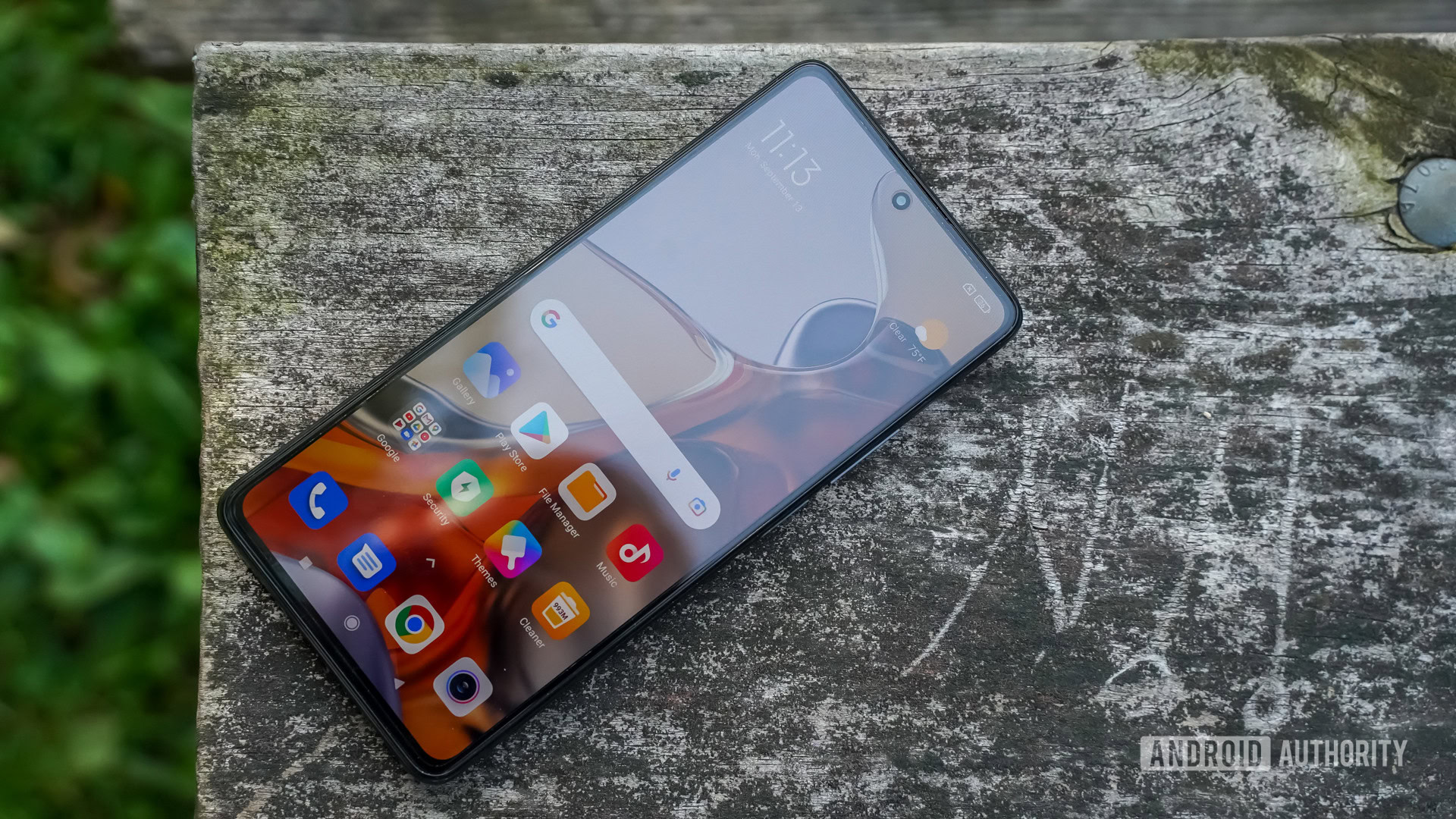
Xiaomi 11T Pro review: Lightning-quick charging meets middling cameras
Published onSeptember 15, 2021
Xiaomi 11T Pro
MSRP:
What we like
What we don't like
Our scores
Xiaomi 11T Pro
Xiaomi is targeting cost-conscious buyers who still want top performance from their smartphones with its new Xiaomi 11T Pro. This fresh phone includes some high-end specs that are wrapped in an affordable package meant to entice flagship seekers on a budget. Can this would-be “flagship killer” stand out in the crowded field of high-end mid-range devices? Find out in the Android Authority Xiaomi 11T Pro review.
What you need to know about the Xiaomi 11T Pro
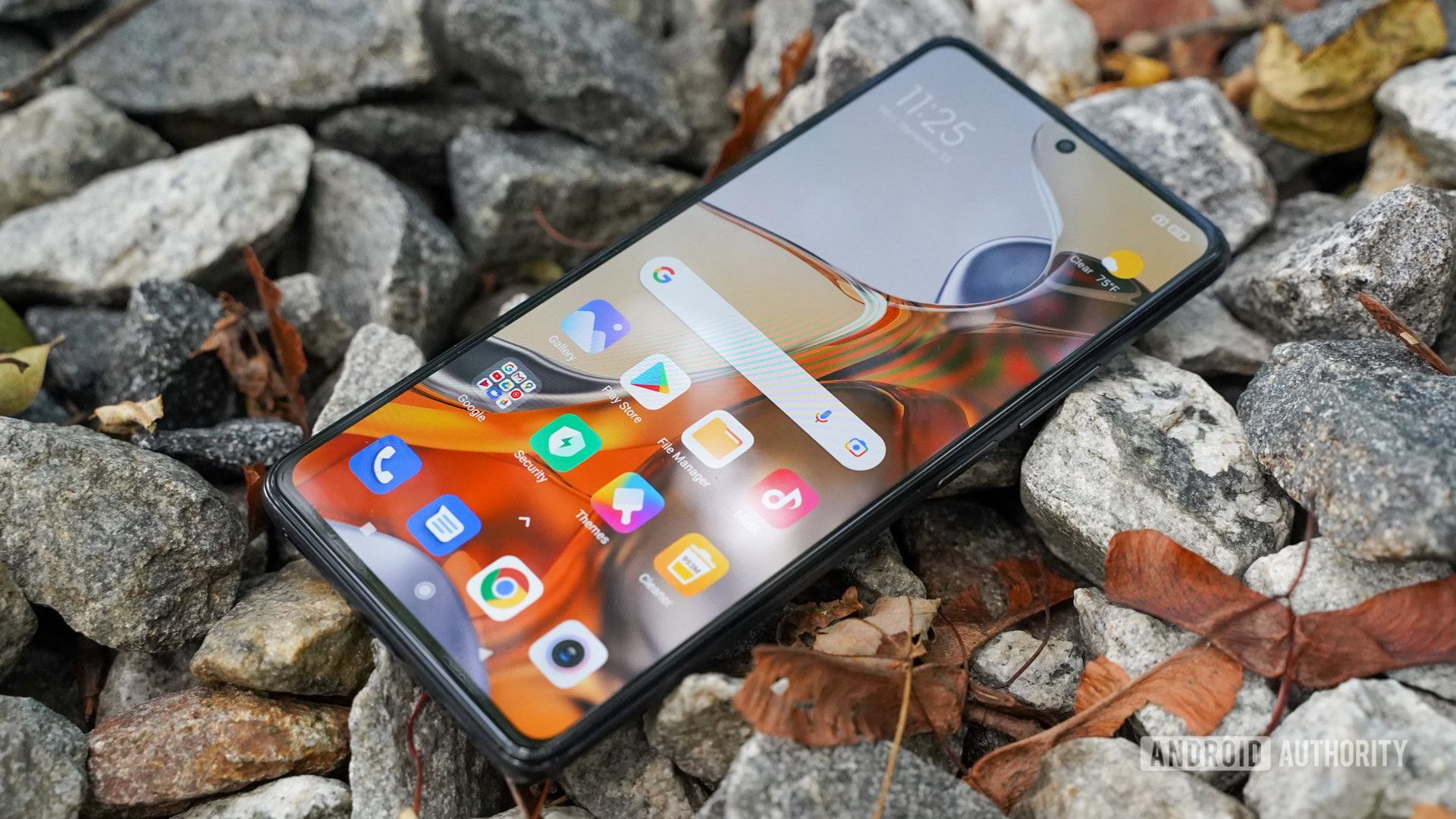
- Xiaomi 11T Pro (8GB, 128GB): €649 (~$750) / Rs. 39,999
- Xiaomi 11T Pro (8GB, 256GB): €699 (~$800) / Rs. 41,999
- Xiaomi 11T Pro (12GB, 256GB): €749 (~$850) / Rs. 43,999
The Xiaomi 11T Pro represents the top of the new 11T range, which also includes the Xiaomi 11T and Xiaomi 11 Lite 5G NE. The 11T series sits just under the higher-end Mi 11 and Mi 11 Ultra released earlier this year and is the successor to the Mi 10T series from 2020. As you might have noticed, Xiaomi has dropped the “Mi” branding for this and all future products within Xiaomi’s core smartphone portfolio. While the Xiaomi 11T series appears to carry over many of the same features from the Mi 11 range, such as processors and cameras, you’ll note differences in materials, some specs, and other details.
The 11T Pro, in particular, faces some tough competition in the upper mid-range from similarly-priced fare from Samsung, Motorola, and OnePlus, among others. While it has what it takes in several respects, it falls a little flat in others. As always, striking a balance is key, but we’ll get to all that later.
Xiaomi is offering three versions of the 11T Pro, including one with 8GB of RAM and 128GB of storage, one with 8GB of RAM and 256GB of storage, and one with 12GB of RAM and 256GB of storage. Colors for the 11T Pro include Meteorite Gray, Moonlight White, and Celestial Blue. The phone was first introduced in China but has since been launched in India as well where it takes direct aim at the OnePlus 9RT. Potential US buyers will find it online via third-party retailers, though Xiaomi hasn’t said when the phone will reach those retailers.
How is the hardware?
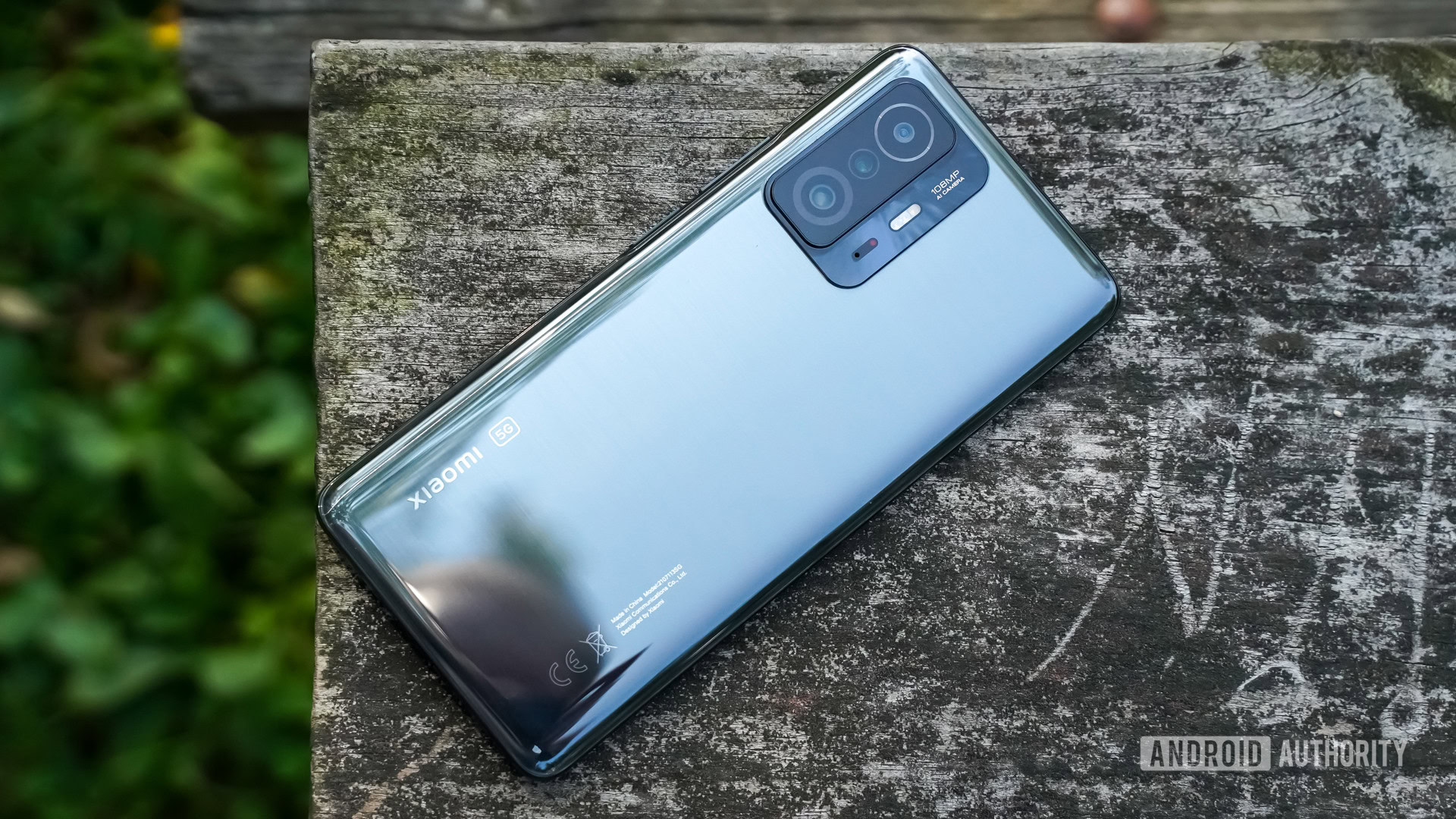
The Xiaomi 11T Pro comes across as a bit vanilla in terms of design. It’s a pretty standard slab that is assembled from run-of-the-mill materials. Nothing about its looks stands out in particular. That’s not necessarily a bad thing.
The phone’s basic shape isn’t far off from the Mi 11 that we saw earlier this year. You could call it a simple rectangle. The four corners are rounded in a pleasing way and the rear panel curves somewhat aggressively along the side edges while the front is perfectly flat. The display is set into a plastic frame that forms a very slight rim. These pieces are set into an aluminum alloy mid-frame and the rear panel is made from tempered glass. You wouldn’t know it while holding it, though, as the materials feel a little plasticky.
On a better note, the display is protected by Gorilla Glass Victus. This is the toughest stuff available from Corning at the moment and is usually reserved for premium flagships. Even so, Xiaomi saw fit to pre-install a screen protector over the glass — that’s a lot of protection!
Xiaomi lent us the Meteorite Gray colorway. It has a fine-grained horizontal pattern that runs side to side, though the pattern is hard to spot over the fingerprint-prone glossy material that shellacks the back.
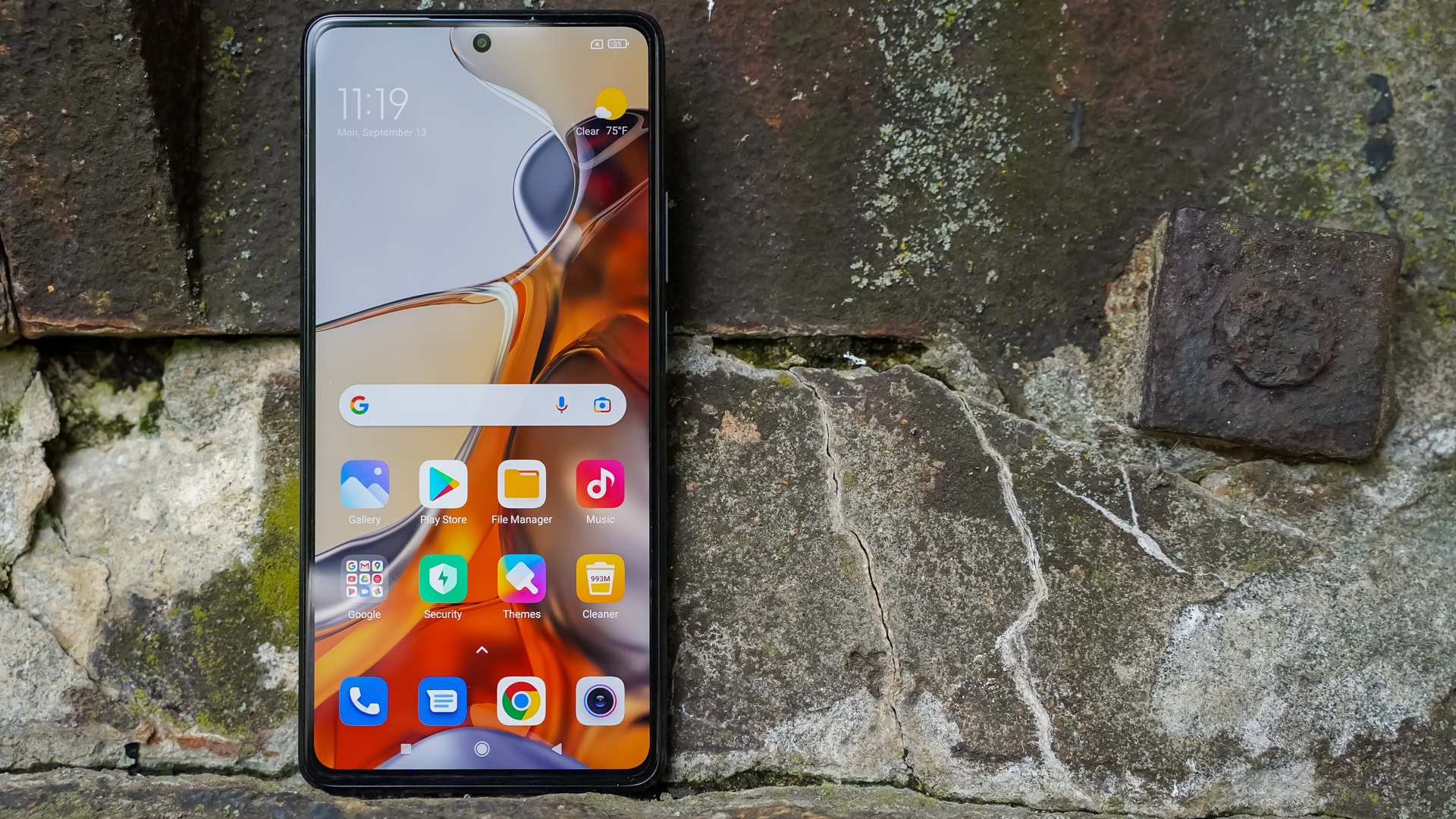
It’s a sizable device (164.1 x 76.9 x 8.8mm) owing to the large-ish screen, but Xiaomi kept the weight way down (204g) thanks to the body materials. I found the 11T Pro comfortable to hold and use over the course of a week, though the glass back is rather slippery. It will slip off desks, tables, and other surfaces if you’re not careful. A basic, clear, rubberized case comes in the box. This protects the phone and makes it easier to grip, though it isn’t the best-looking protective cover I’ve seen.
See also: The best 5G phones you can buy right now
The chassis includes a fairly typical set of features in the places you expect to find them. Of note, the Xiaomi 11T Pro supports two SIM cards, both of which can connect to 5G networks. There’s no room for a microSD memory card, though. A USB-C port graces the bottom edge and the control buttons are perched along the right. The power button doubles as a fingerprint reader. It was easy to train and quick and reliable to unlock the phone.
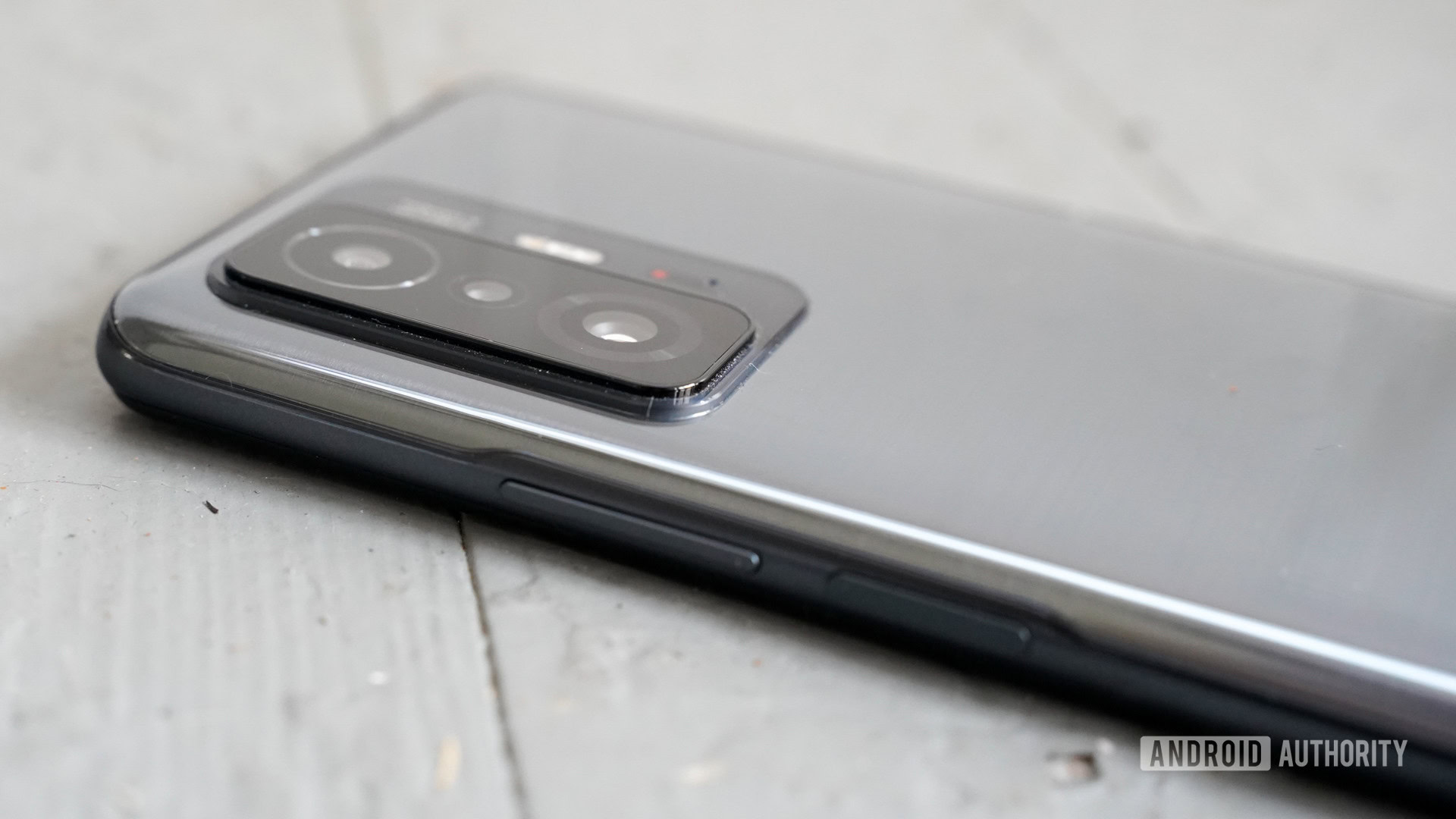
On the audio front, there’s no headphone jack but there are stereo speakers. Xiaomi tapped Harman Kardon to fine-tune the speakers, which are Dolby Atmos capable. The phone produced excellent sound. Music came across with a pleasing balance of lows and highs, and movies delivered just the right amount of punch. The 11T Pro can handily fill an average room with music and do so without distorting or breaking up. Well done, Xiaomi.
Xiaomi crafted a solid, if somewhat simple, piece of hardware in the 11T Pro.
The camera module is (thankfully) nothing like the massive camera module of the Mi 11 Ultra. Instead, it’s a slightly more square variation of the Mi 11’s camera module. There are two levels to the raised module, with the lenses in one tier and the flash and mic combo in the other. The main lens has a highly reflective gray rim around it that makes it stand out visually while the ultra-wide lens has a less-reflective rim.
As far as the IP rating is concerned, the phone carries IP53 dust and water protection. This means it can handle some light dust and splashing, but it is absolutely not dunk-proof. At least some phones in this price category have at least IP67 ratings, so it’s a bit disappointing that Xiaomi didn’t build in all the protection it could for the phone.
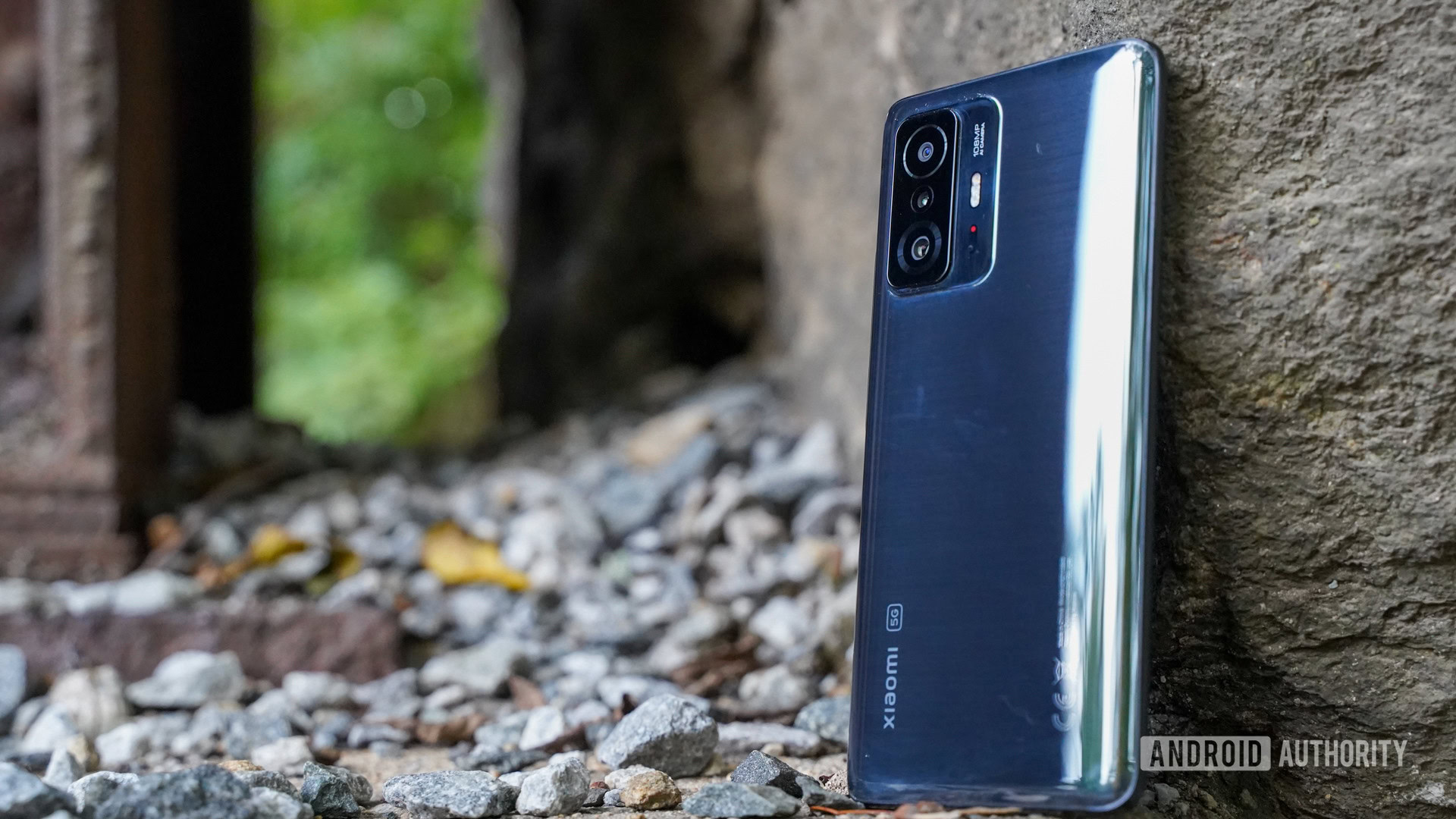
Xiaomi crafted a solid, if somewhat simple, piece of hardware in the 11T Pro. It could use a bit more personality though surely many people will be happy with the toned-down looks and features of this phone.
Is the screen any good?

Xiaomi aimed high with the 11T Pro’s display and hit the mark dead on with this beautiful panel.
The AMOLED screen measures 6.67 inches across the diagonal, which is a fine size, and packs 2,400 x 1,080 pixels for FHD+ resolution. It’s an expansive display that offers more than enough room and resolution for all your apps and activities. Websites, social networks, and video content are dazzlingly sharp and crisp on the screen, though it is a step below the WQHD+ resolution of the Mi 11 and Mi 11 Ultra.
The Xiaomi 11T Pro's display is a beautiful 120Hz panel.
Color and brightness are top-notch. The screen supports over one billion colors and features a contrast ratio of five million to one. Combined with 800 nits of standard brightness and 1,000 nits of peak brightness, the display pushes out a huge amount of light and is easy to see and use under even the brightest conditions. It supports HDR10 Plus, and high dynamic range content from the likes of Netflix looks really impressive.
Like many competing flagships, the 11T Pro’s screen can ramp up the refresh rate from 60Hz (standard) to 120Hz (adaptive). Flipping on the 120Hz setting results in ultra-smooth scrolling and animations on the screen as you navigate through apps and the user interface. The phone will use more power in the 120Hz mode, despite the adaptive nature of the refresh rate. Accompanying the high refresh rate is a fast touch response rate of up to 480Hz. This means the phone will react to your finger touch input faster, which is great for gaming.
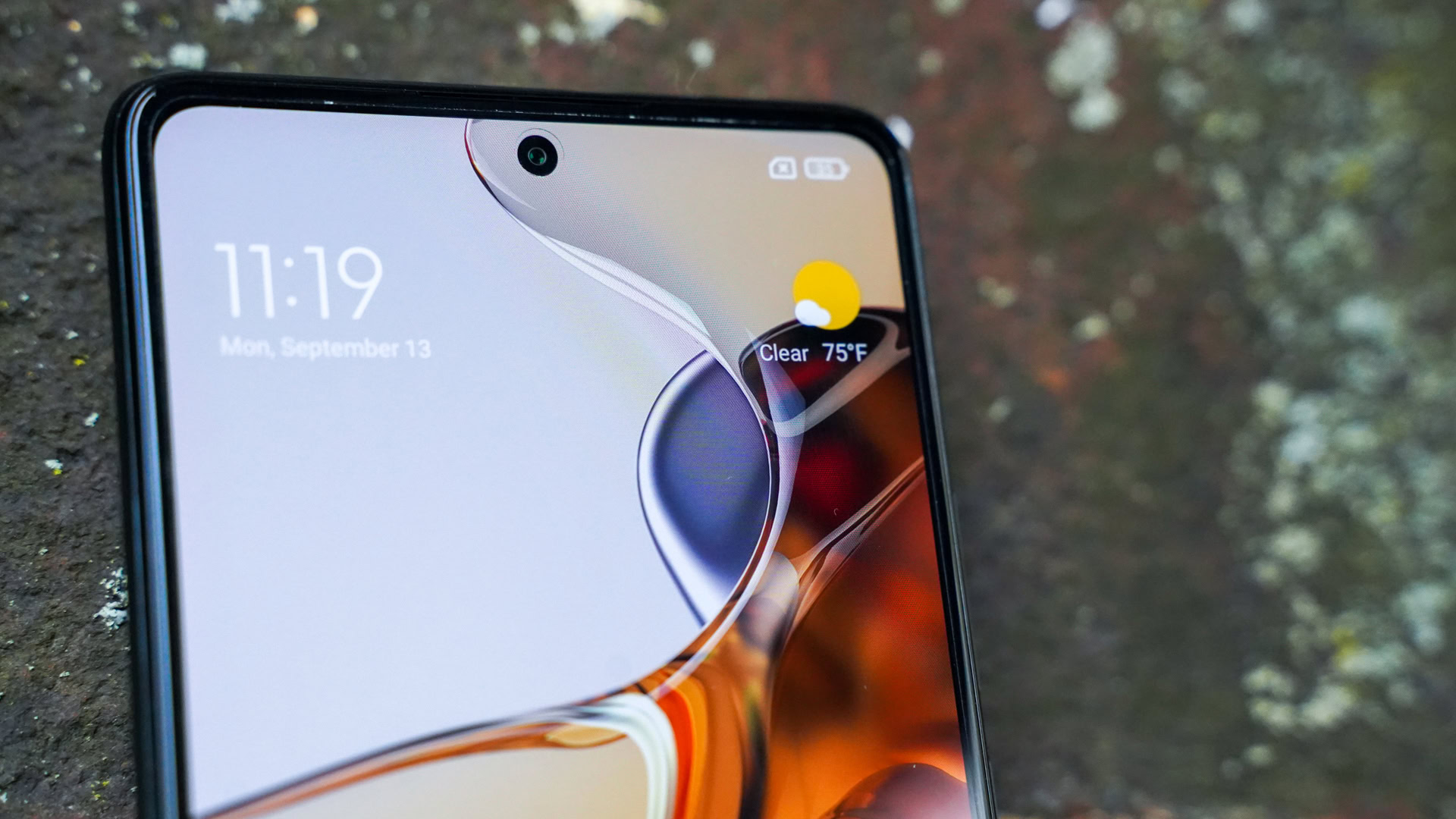
Xiaomi opted for a punch-hole selfie camera, which is centered in the top of the screen. It mostly disappears from view as you use the phone, though it’s still noticeable when watching videos.
In all, Xiaomi assembled an excellent display for the 11T Pro.
How is battery life?
The 11T Pro sports some of Xiaomi’s most advanced battery technology, which ensures that the phone always has a charge when you need it.
To start, Xiaomi decided on a two-cell arrangement, with separate 2,500mAh batteries making for a total capacity of 5,000mAh. That’s a large power cell but expected for a device in this category. During my time with the phone, it averaged a screen-on time of just over six hours. The best it did was close to 6.5 hours with the 120Hz mode turned on. If you stick with 60Hz, you’ll see screen-on time closer to seven hours. These are competitive numbers for the segment.
The Xiaomi 11T Pro is one of the fastest-charging phones in the world.
The 11T Pro is one of the fastest-charging phones in the world. It supports 120W wired charging and ships with the 120W charger in the box. Nice. How fast is fast? It goes from zero to 100% in just 17 minutes. Plugging in for 10 minutes nets you a 72% charge.
With charging speeds like this, you almost always have the time to top up completely, even when you’re in a hurry. Xiaomi says the phone can manage these rapid charging speeds over time (>800 charging cycles) and do so without heating up and damaging the battery. In my time with the phone, I noticed only the slightest degree of warmth during charging with the included 120W charger. Time will tell if battery health holds up, but Xiaomi has been toying with super-fast charging for a while now and is adamant that even after 800 cycles (or approximately two years of use), the phone should only lose 20% of its battery capacity.
See also: Charging habits to maximize battery life
You’ll pay for this fast wired charging via one stinging omission: the Xiaomi 11T Pro does not support wireless charging. That’s a major missing feature even on a sub-flagship. While the rapid wired charging is absolutely great, wireless charging has become a creature comfort that’s sure to be missed by some buyers who’ve grown accustomed to it on their existing phones.
That aside, between the solid screen-on time and rapid wired charging, the Xiaomi 11T Pro manages to deliver the goods when it comes to the battery.
How powerful is the Xiaomi 11T Pro?
Xiaomi was sure to opt for the Qualcomm Snapdragon 888 processor for the 11T Pro. It’s the top chipset of 2021 (barring the gaming-focused Plus variant) and has powered nearly every flagship of consequence. It’s paired with LPDDR5 RAM and UFS 3.1 storage for top speeds with all manner of tasks.
During daily use of the phone, I witnessed near-flawless performance. The device ran quickly and smoothly with very little sluggishness or stuttering. Screen transitions were like liquid and apps of all types opened in a blink. Demanding apps such as 3D games jumped to life and delivered excellent experiences. Benchmark scores for the 11T Pro were solid, though not the best we’ve seen from a Snapdragon 888 device. It posted a solid runtime on our homegrown Speed Test G benchmark, for example, but still managed to take a little longer than the Mi 11 and Mi 11 Ultra. The phone’s day-to-day prowess, however, supplants the importance of the benchmarks, and it more than delivers here.
More reading: Here are the best Snapdragon 888 phones you can buy
On the wireless front, the phone supports sub-6GHz 5G. The phone will be sold unlocked via select online retailers in the US market and it is compatible with some US 5G bands for AT&T and T-Mobile, but not all. We were unable to test the phone’s 5G performance for this review. Keep in mind it doesn’t support mmWave 5G on compatible networks such as Verizon.
Wi-Fi 6 is on board, as is Bluetooth 5.2. Wi-Fi 6E would’ve taken the phone to another level for future-proofing, but Wi-Fi 6 at least ensures solid performance with modern networking and is in line with what we’d expect to see at this price. I experienced reliable Wi-Fi speeds while testing the phone.
How’s that 108MP camera?
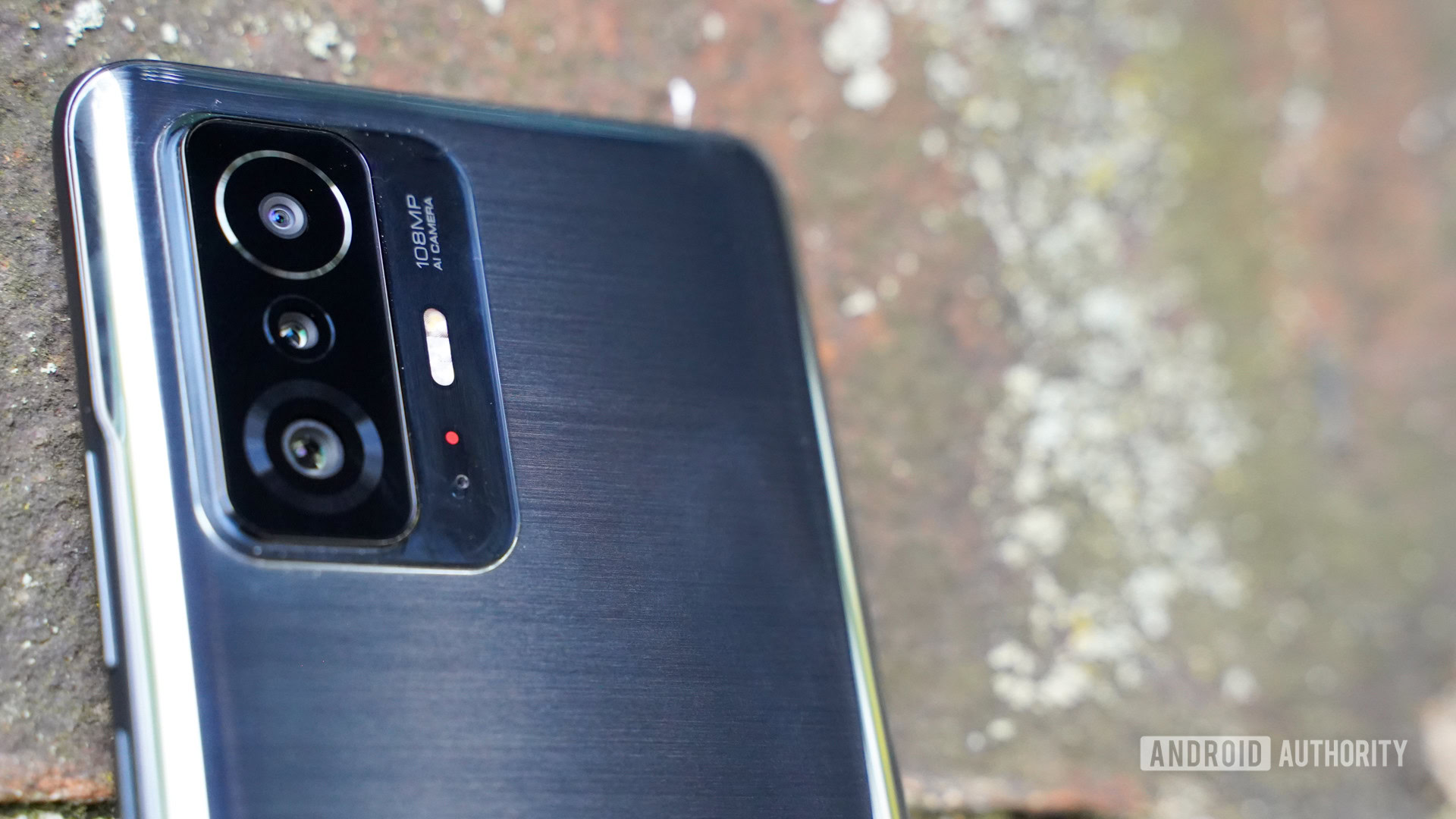
Xiaomi didn’t stray far from recent Mi series camera arrangements with the 11T Pro’s shooters. That means a 108MP main camera, an 8MP ultra-wide camera, and a 5MP telemacro camera on the rear, all joined by a 16MP selfie camera on the front. These provide Xiaomi 11T Pro owners with plenty of flexibility when it comes time to capture a variety of shots, though, just like with the Mi 11, I’d prefer Xiaomi dropped the telemacro lens in favor of a regular optical zoom lens.
See also: The best camera phones you can get
Camera shooting modes are robust. The phone includes a basic carousel in the viewfinder that slides between pro, video, photo, portrait, and more. Under the more tab, you’ll find extended shooting modes, including night, 108MP, short video, panorama, document scanner, vlog, slow motion, time-lapse, movie effects, long exposure, dual video, and clone.
The main 108MP camera bins down by a factor of nine, making for final “Super Pixel” images of 12MP at a pixel size of 2.1μm. Of course, you can tap into the full 108MP resolution of the main camera if you wish. It’s a fast lens at f/1.75, which means it lets in plenty of light. The camera gets the job done in good order. Regular daytime photos taken with the main camera are fine. I saw solid focus, good exposure, and accurate color representation. If there’s one thing I spotted from time to time, it was a little oversharpening. The HDR function managed to strike the right balance most of the time, with only a few stinkers in the lot.
The ultra-wide struggled with exposure and detail, and was more prone to introducing over-sharpening and noise.
Xiaomi reined in the 8MP ultra-wide lens a bit to 120-degrees, down from the Mi 11’s 128-degree field-of-view. That’s still plenty wide and actually makes for a bit less distortion in the resulting images. Shots I took were average for an ultra-wide, though. There was still some noticeable stretching in the corners of most images, but it wasn’t too bad. The ultra-wide also struggled with exposure and detail and was more prone to introducing oversharpening and noise.
The 5MP telemacro camera is meant to help you take better close-up shots. It’s a macro lens but features a small amount of optical zoom. This allows you to capture macro shots from a greater distance from the subject. Most of the time you need to be literally right on top of your subject to pull off an in-focus shot. This lens lets you back off a little, in the range of 3cm to 7cm. Moreover, it includes auto-focus to help sharpen things up.
I’m still not sold on the usefulness of macro lenses and Xiaomi’s telemacro implementation doesn’t change that. Getting in-focus shots was really hard, even with the autofocus function. You have to hold very still, and the depth of field is so narrow that only a small portion of the image is in focus. Color and exposure were good, at least in the daytime shots I took.
Low-light shooting delivered the expected results. That means a bit more noise and grain visible in the images. The white balance looks good, but focus is a touch soft. Shooting in night mode offers mixed results at best. While the camera is able to digest a fair amount of light and bring out the details, it does so at the expense of noise and grain, which weigh heavily on the pix.
The 16MP selfie camera is just okay. In the selfie and the self-portrait below, you can see that I am in good focus. There’s enough detail scattered in the background of each image. I like the bokeh effect of the portrait shot, but the background got really washed out and overexposed. The colors turned out to be mostly accurate, if a little flat. The Xiaomi 11T Pro’s selfie camera doesn’t set the world on fire, but it’s perfectly serviceable.
The 4K/60fps video footage I captured was clean with good exposure and little noise. There’s also support for 960fps super slow motion and 8K recording. It’s a serviceable video camera.
On balance, while many of the shots are fine none of them is truly exceptional. We saw better performance from the pricier Xiaomi Mi 11 and some competing phones in the market have an edge here.
You can view full-resolution photo samples in this Google Drive folder.
Anything else?
- MIUI 12.5: The 11T Pro runs Android 11 and Xiaomi’s MIUI 12.5. The user interface skin is, for the most part, a decent variation on Android. It’s certainly better than MIUI 11 or 12. The most noticeable differences between MIUI 12.5 and stock Android 11 are the fonts, app icons, and the way the Settings menu is arranged. However, there is one major annoyance: in-app ads. I encountered a number of ads when using Xiaomi-developed apps, such as the File Manager. Ads would appear at the bottom of the screen when doing tasks such as downloading apps. That’s really not cool, Xiaomi. At least the core UI is ad-free and allows for a solid amount of customization.
- Updates: If you’re in the market for an 11T or 11T Pro, you’re in luck when it comes to operating system and security updates. Xiaomi recently committed to providing three years of system updates and four years of security updates to this series of phones. That matches Samsung’s commitment and is as good as it gets for Android smartphones right now. Let’s hope this is the start of a trend for Xiaomi phones.
Xiaomi 11T Pro specs
| Xiaomi 11T Pro | |
|---|---|
Display | 6.67-inch AMOLED flat DotDisplay 2,400 x 1,080 FHD+ 120Hz AdaptiveSync 480Hz touch response HDR10+ Gorilla Glass Victus 800 nits brightness, 1,000 nits peak brightness Contrast ratio: 5,000,000:1 |
Processor | Qualcomm Snapdragon 888 Adreno 660GPU X60 modem |
RAM and storage | 8GB / 128GB 8GB / 256GB 12GB / 256GB |
Camera | Rear: Main: 108MP, f/1.75, 2.1μm 9-in-1 Super Pixel Ultra Wide-angle: 8MP, f/2.2, 120-degree FOV Telemacro: 5MP, f/2.4 Front: Selfie: 16MP Video: 8K at 30fps 720p at 960fps super slow motion |
Battery | 5,000mAh power cells 120W HyperCharge In-box 120W charger No wireless charging |
Sound | Dedicated dual speakers Sound by Harman Kardon Dolby Atmos |
Connectivity | 5G Wi-Fi 6 Bluetooth 5.2 NFC GPS |
Dimensions and weight | 164.1mm x 76.9mm x 8.8mm 204g |
Colors | Meteorite Gray, Moonlight White and Celestial Blue |
Value and competition
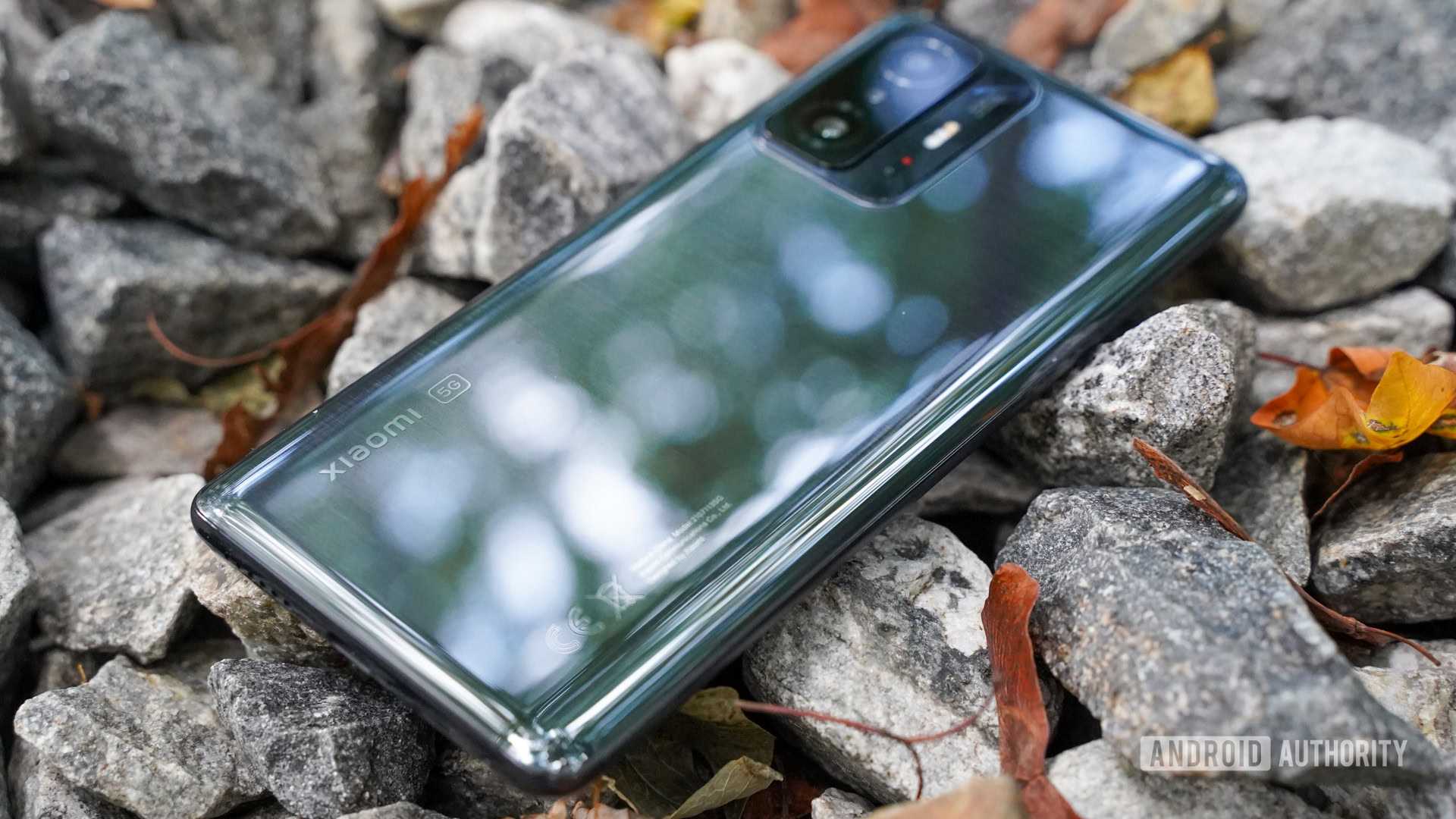
The Xiaomi 11T Pro’s starting price of €649 feels reasonable at first blush. The phone has a lot going for it. First, there’s the luscious display that makes everything look vivid. Then there’s the ultra quick-charging battery that lasts all day. Let’s not forget the flagship processor and its hefty overall performance and comprehensive connectivity suite. These all command a price premium. There are, however, a few things that hold the phone back. For example, the camera could be better and so could the design and materials. Moreover, the phone lacks a robust IP rating. These few things make me wish the phone were a little cheaper than it is.
In terms of the competition, the Xiaomi 11T Pro has a lot to worry about from its own stable. The Chinese brand also debuted the Xiaomi 11T (€499) and Xiaomi 11 Lite 5G (€399). The much cheaper 11T has the same camera and display as the 11T Pro, but swaps out the Snapdragon 888 for a MediaTek Dimensity 1200-Ultra processor and the 120W charging for 67W charging. The 11 Lite 5G further pares down the specs with a smaller screen, Snapdragon 778G processor, and a wholly different camera arrangement. Of course, you could opt for the high-end Mi 11 ($749) for a little extra, or if you’re happy to spend a lot more, the Mi 11 Ultra ($1,599). Xiaomi has no shortage of competitive offerings.
Check out: The best Android phones | The best phone deals
There are other alternatives. For example, there’s the vanilla OnePlus 9 ($649) model. It has the same processor and a fantastic 120Hz panel of its own. For those in the US, there’s also the Motorola Edge ($699), which has a similar-sized screen that refreshes at 144Hz and a 108MP camera, though you lose some power with the Snapdragon 778G chipset. UK buyers instead get the Motorola Edge 20 Pro (£649) with an even sturdier spec sheet and a similar camera setup to the Xiaomi 11T Pro, albeit with a marginally inferior Snapdragon 870 processor.
In India, the phone takes on the OnePlus 9RT (Rs. 43,999), a recently launched refresh of the OnePlus 9R. The OnePlus 9RT brings a higher-end 50MP primary sensor from the OnePlus 9 as well as a Snapdragon 888 chipset. However, the Xiaomi 11T Pro handily trounces the OnePlus 9RT with its 108MP camera, faster charging, and, most importantly, price.
The Samsung Galaxy S21 FE ($699 / €749 / £699 / Rs. 54,999) is yet another competitor for the phone which offers great value for money with specs that compare well to the Xiaomi 11T Pro. In India, however, the phone commands a significant premium over the Xiaomi 11T Pro making it less of a deal.

Last, there’s always the iPhone 13 ($799). You’ll get all of Apple’s power and ecosystem extras, though it has a smaller 6.1-inch screen and runs Apple’s iOS, which is a wholly different experience when compared to Android.
Xiaomi 11T Pro review: The verdict
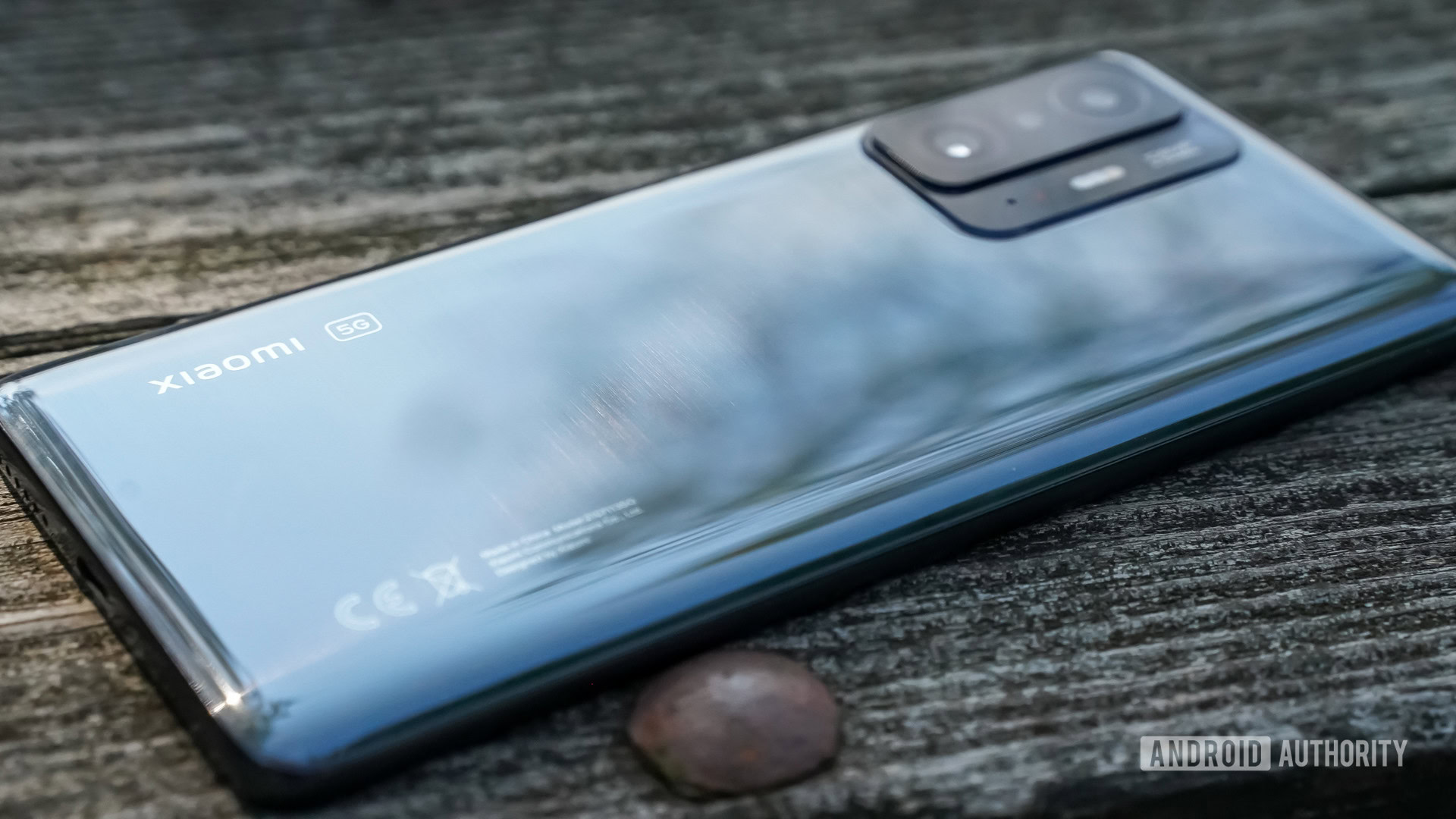
Xiaomi marched into the high-end of the mid-range market with the 11T Pro and in so doing entered a competitive space where it’s hard to stand out. There are plenty of $600 to $700 phones fighting for your dollar and each has its own story to tell. How does the 11T Pro’s story turn out?
Xiaomi could have done a little bit better with the hardware. While the company fielded a first-class display, the rest of the chassis comes across as boring and staid. The materials feel more like plastic than metal and glass and the lack of an IP68 rating definitely doesn’t help matters. Other detractors include the middling camera results, the missing wireless charging, and the in-app ads baked into Xiaomi’s MIUI 12.5.
The Xiaomi 11T Pro attempts the tricky balancing act of any flagship killer, but is tipping just a little bit in the wrong direction.
On the flip side, the phone performs where it counts. The Snapdragon 888 processor ensures excellent speeds and pushes plenty of power for gaming and other intense applications. Battery life put up competitive numbers and the included 120W charger means you can fully recharge the phone in mere minutes. Last, Xiaomi is giving you plenty of options when it comes to RAM and storage, ensuring you get the model that makes the most sense for you.
The Xiaomi 11T Pro is a solid €649 / Rs.39,999 offering and will appeal to power-hungry users on a sub-premium budget. Overall though, it has a few more faults than its price tag allows. Getting the price, feature list, design, and quality to all line up is a delicate balancing act and one that’s tough to master. Xiaomi’s latest is tipping just a little bit in the wrong direction.